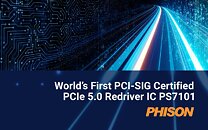12V-2X6 "H++" Standard Touted to Safely Deliver 675 W
Online hardware communities continue to discuss the 12VHPWR connection standard's troubled existence, while revised technology gets worked on—quietly—in the background. PCI-SIG's 12V-2x6 connector was first revealed last summer, signalling an alternative power delivery method for high-wattage graphics cards. Past TPU reports show that the 12V-2x6 16-pin design has already popped up on select NVIDIA Founders Edition cards, GeForce RTX 40 SUPER custom graphics card designs, and various new generation power supplies. Earlier today, Алексей (AKA wxnod) took to social media and posted an image of the freshly deshrouded "H++" 12V-2x6 (total design limit: 675 W) socket, as well as a shot of the familiar "H+" 12VHPWR (max. 600 W).
This fifth generation socket design largely rolled out with Team Green's GeForce RTX-40 SUPER card series, although wxnod notes that exceptions do exist: "Some AIC GeForce RTX 4070 SUPER, 4070 Ti SUPER and 4080 SUPER cards are still using the H+12VHPWR interface." The H++ identified 12V-2x6 design's power limit peaks at 675 W—a technical breakdown from last July revealed that 75 W comes from the expansion slot, while the big 600 W portion flows through the 16-pin connector. As mentioned before, 12V-2x6 debuted on a few Non-SUPER cards back in 2023, but last month's SUPER series product launch marked a more comprehensive rollout. AMD has indicated that it is considering an adoption of Gen 5 H++ in the future, but we have not heard much on that subject since last August. A new generation 16-pin PCIe 6.0 power connector design was linked to the upcoming NVIDIA RTX 50-series of "Blackwell" GPUs, but Hardware Busters has refuted rumors generated by Moore's Law is Dead. Team Green is expected to remain faithful to "H++" 12V-2x6 with the launch of next generation graphics cards.
This fifth generation socket design largely rolled out with Team Green's GeForce RTX-40 SUPER card series, although wxnod notes that exceptions do exist: "Some AIC GeForce RTX 4070 SUPER, 4070 Ti SUPER and 4080 SUPER cards are still using the H+12VHPWR interface." The H++ identified 12V-2x6 design's power limit peaks at 675 W—a technical breakdown from last July revealed that 75 W comes from the expansion slot, while the big 600 W portion flows through the 16-pin connector. As mentioned before, 12V-2x6 debuted on a few Non-SUPER cards back in 2023, but last month's SUPER series product launch marked a more comprehensive rollout. AMD has indicated that it is considering an adoption of Gen 5 H++ in the future, but we have not heard much on that subject since last August. A new generation 16-pin PCIe 6.0 power connector design was linked to the upcoming NVIDIA RTX 50-series of "Blackwell" GPUs, but Hardware Busters has refuted rumors generated by Moore's Law is Dead. Team Green is expected to remain faithful to "H++" 12V-2x6 with the launch of next generation graphics cards.
















































